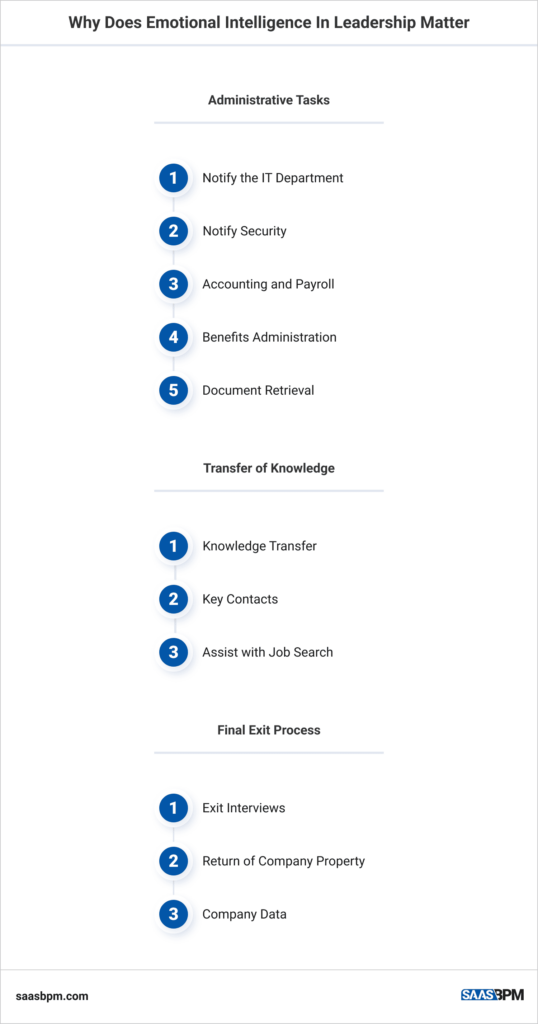The past few years have been tough for employers in terms of retaining talent. The Great Resignation, the spread of the remote and freelance work models and the fierce competition for ‘stealing’ top talent with lucrative perks have all contributed to the instability of the job market. Thus, a solid employee offboarding process is the last chance to leave a good impression in the soon-to-be-gone team member.
Going your separate ways on good terms is just the tip of the iceberg. In reality, this is a way to protect your brand reputation and dignity as a fair employer. 10% of Americans lie about their experience with their former employer, and half of them admit they aimed to downgrade the company. Websites like Glassdoor are a platform where such ex employees badmouth can really take a toll on potential new hires’ motivation to join your team.
In this article, we will take a look into what employee offboarding is and why it matters so much. Also, we will highlight the steps to build an effective process that will leave both sides with positive impressions of each other.
What Is Employee Offboarding?

When it comes to managing human resources, employee offboarding is an essential process that should be given the same level of attention as the onboarding process.
Employee offboarding is the process of managing and facilitating the departure of an employee from a company. It involves handling legal obligations, transitioning workload, managing knowledge transfer, and conducting exit interviews.
In recent years, employee offboarding has gained attention from HR managers as companies recognize the importance of providing a positive leaving experience for their team members. Offboarding can have a significant impact on the morale of remaining employees, as well as the organization’s reputation, brand image, and productivity.
By having a thorough offboarding process, a company demonstrates its commitment to employee well-being, even after a staff member has decided to leave the company. It also ensures that knowledge, skills, and work products developed by departing colleagues are not lost, thereby avoiding the need for current employees to start from scratch.
Furthermore, a positive offboarding experience can encourage individuals to return to the company if they feel they can be better supported later in their careers.
Employee Offboarding Checklist
Creating an employee offboarding checklist can help ensure that all tasks are completed accurately, and no critical steps are accidentally missed. Below is a broken-down version of the best practices grouped into 3 key categories.

Administrative Tasks
1. Notify the IT Department
The IT department needs to know immediately when an employee is leaving the company. They should revoke access to company emails, drives and other important devices. Any hardware or devices provided to the employee should be accounted for, and any company data stored on such devices should be backed up for future use or archive purposes.
2. Notify Security
Security should also be informed to ensure that the company’s physical security is still intact. Collect keys, access cards, or any forms of physical access mechanisms that the employee may possess. Revoking access and collecting any company property is essential to ensure company assets are not stolen and that the environment remains secure.
3. Accounting and Payroll
The HR department should ensure that they handle employee’s payroll records appropriately. The process should include payment of any outstanding compensation, payment of vacation pay or severance, and calculation of taxable income.
4. Benefits Administration
Collect any company property that the employee may have such as health, insurance or retirement plans. Inform them about the next appropriate steps they may take to ensure uninterrupted coverage of their benefits.
5. Document Retrieval
Collect all company documents and keys that may be in the employee’s possession. This could include signed documents, company policies, notes, manuals or any other instructional documentation.
Transfer of Knowledge
1. Knowledge Transfer
Planning for knowledge transfer should begin early by identifying the areas of knowledge and expertise that the employee possesses and the means of sharing that information with other employees. This could be via a meeting, formal handover or informal discussions. Ensure that key contacts and project materials are transferred with clear documentation of what has been done or needs to happen next.
2. Key Contacts
Identify and ensure that existing clients or any other important relationships are aware of the employee’s departures. Introduce the point person and ensure there are further communication channels available.
3. Assist with Job Search
The HR department should provide support to departing employees to help them find new employment opportunities. This could involve assisting with resume design and interview skills, writing a reference or contacting relevant professional networks.
Final Exit Process
1. Exit Interviews
Conducting exit interviews is an excellent way to gain insightful feedback and identify issues that need attention. Conduct a private session to discuss what went well and what can be done better by the organization. Also, provide the chance for the employee to provide any advice they may have.
2. Return of Company Property

Obtain any company property that may still be with the employee. Property like laptops or devices should undergo a thorough inspection to ensure everything is in order, including back-up and overall condition.
3. Company Data
Ensure all company data in the possession of the departing employee is secured or erased. You can back it up for future use, or you can provide a personal copy to the individual.
Final Words
Crafting an effective employee offboarding process is essential for any successful business. Not only does it make the transition easier for both employer and employee, but it also helps to ensure that the ex-employee leaves in the best possible way.

